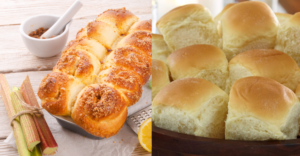What Is Halloumi Cheese? (and Why You Should Care)
What To Know
- Halloumi can be sliced and grilled or fried until golden brown, creating a crispy outer layer with a soft and chewy interior.
- Halloumi cheese is a good source of protein, calcium, and vitamins A, B, and D.
- It is often served as an appetizer or main course, and it is a staple ingredient in many traditional dishes.
Halloumi cheese, pronounced “ha-LOO-mi,” is a unique and delectable semi-hard cheese originating from the island of Cyprus. Its distinctive characteristics, including its high melting point and ability to be grilled or fried, have made it a beloved culinary delight worldwide.
Origins and History
Halloumi has a rich history dating back centuries. Its origins can be traced to the ancient Greek and Roman civilizations, where similar cheeses were produced. The name “halloumi” is believed to derive from the Greek word “hals,” meaning “salt.”
Production Process
Halloumi is traditionally made from a mixture of sheep’s and goat’s milk, although cow’s milk may also be used. The milk is heated and then coagulated with rennet. The curds are cut and placed in molds, where they are pressed and salted. Halloumi is then aged for several weeks or months.
Unique Characteristics
Halloumi cheese is renowned for its high melting point, which allows it to be grilled or fried without melting. This unique property is attributed to the presence of proteins called caseins, which form a strong network that traps moisture.
Culinary Applications
Halloumi’s versatility makes it a popular ingredient in various culinary creations. It can be:
- Grilled or fried: Halloumi can be sliced and grilled or fried until golden brown, creating a crispy outer layer with a soft and chewy interior.
- Added to salads: Crumbled or cubed halloumi adds a salty and savory flavor to salads.
- Used in sandwiches: Halloumi’s texture and flavor complement sandwiches and wraps.
- Baked or roasted: Halloumi can be baked or roasted with other vegetables or meats.
Nutritional Value
Halloumi cheese is a good source of protein, calcium, and vitamins A, B, and D. It also contains a moderate amount of fat and sodium.
Health Benefits
The consumption of halloumi cheese may offer several health benefits:
- Rich in calcium: Halloumi is a good source of calcium, which is essential for maintaining strong bones and teeth.
- High in protein: Halloumi is a good source of protein, which helps promote muscle growth and repair.
- Contains vitamins: Halloumi contains vitamins A, B, and D, which support various bodily functions.
Cultural Significance
Halloumi cheese holds a special place in Cypriot culture. It is often served as an appetizer or main course, and it is a staple ingredient in many traditional dishes. Halloumi is also a symbol of Cypriot hospitality and is often offered to guests.
Summary: The Halloumi Legacy
Halloumi cheese has captivated taste buds worldwide with its unique flavor, texture, and versatility. Its origins, production process, and culinary applications make it a culinary treasure that continues to delight and inspire.
Frequently Asked Questions
Q: What is the difference between halloumi and other cheeses?
A: Halloumi is unique in its high melting point, which allows it to be grilled or fried without melting.
Q: Can halloumi be eaten raw?
A: Yes, halloumi can be eaten raw, but it is more commonly grilled or fried to enhance its flavor and texture.
Q: Is halloumi vegetarian?
A: Traditional halloumi is made from sheep’s and goat’s milk, but some varieties may contain cow’s milk. Therefore, it is not suitable for vegans but may be suitable for vegetarians.
Q: How long does halloumi last?
A: Unopened halloumi can be stored in the refrigerator for up to 2 months. After opening, it should be consumed within 1 week.
Q: What are some popular dishes that use halloumi?
A: Halloumi is a versatile ingredient used in various dishes, including salads, sandwiches, wraps, grilled platters, and pasta dishes.
